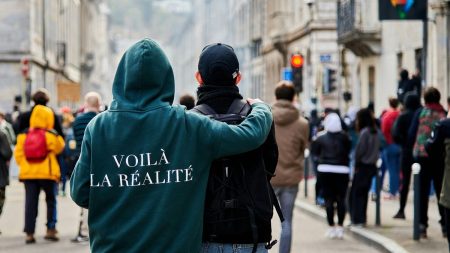The Camino de Santiago in Spain, traditionally a Catholic pilgrimage, is increasingly attracting a diverse range of pilgrims, including those who identify as spiritual but not religious. Rachael Sanborn, a rebel and adventurer, found herself drawn to the Camino in her early 30s, seeking an escape from a bad relationship. After walking the Camino, she returned every year and eventually founded Red Monkey Walking Travel, guiding others on the pilgrimage. Sanborn believes that the Camino can offer a transformative experience to people of all religions, noting that it has always been open to pilgrims from diverse backgrounds.
The number of non-Christian pilgrims on the Camino has been on the rise, with nearly half a million people walking the route in 2023. While about 40 per cent of pilgrims walk for religious reasons, many embark on the journey for reasons beyond religion, such as health, grief, cultural exploration, or adventure. The overlap between religious and secular motivations on the Camino is significant, as people like Nancy Mead, an Episcopalian, have found valuable life lessons along the way that apply to everyone, regardless of religious beliefs. The Camino offers a unique blend of spirituality and secular experiences, appealing to a wide range of individuals.
The growing trend of spiritual but not religious pilgrims on the Camino reflects a broader movement towards secular spirituality, where individuals seek meaning and connection without traditional religious beliefs. Researchers have noted that secular rituals and practices, such as meditation and yoga, offer opportunities for people to feel connected to something greater than themselves. However, there is a need to navigate the appropriation of religious practices by nonreligious individuals, as the core elements of religion are seen as essential to the transformative power of pilgrimage.
Religious ethics expert Liz Bucar highlights the complexities of engaging with spiritual practices while rejecting religion. She argues that true pilgrimage requires engaging with the religious aspects of the journey, rather than seeking a surface-level experience. Bucar warns against treating pilgrimage as spiritual tourism, advocating for a deeper understanding of the historical context and challenging narratives surrounding sites like the Camino de Santiago. While the pilgrimage can be a source of inspiration and transformation, it also has a darker history that must be acknowledged.
Sanborn, who views Christianity as integral to the Camino experience, emphasizes the importance of honoring the traditions and architecture of the route, even as pilgrims come from diverse religious backgrounds. She acknowledges the complex history of Christianity on the Camino, which includes dark chapters of persecution and violence. However, she maintains that the Camino has a magical and transformative quality that transcends religious boundaries, allowing all pilgrims to experience the journey in their unique way. Sanborn urges acceptance and open-mindedness towards the diverse experiences of those who walk the Camino.
In conclusion, the Camino de Santiago continues to be a source of spiritual, emotional, and cultural enrichment for pilgrims of all backgrounds. Its allure extends beyond religious boundaries, attracting individuals seeking solace, self-discovery, and connection with nature. While the intersection of spirituality and religion on the Camino can be complex, the pilgrimage offers a space for personal growth, reflection, and communal experience. As the tradition evolves to accommodate the changing demographics of pilgrims, the Camino remains a timeless and sacred path for those seeking to explore the depths of their spirit and engage with the mysteries of life.









